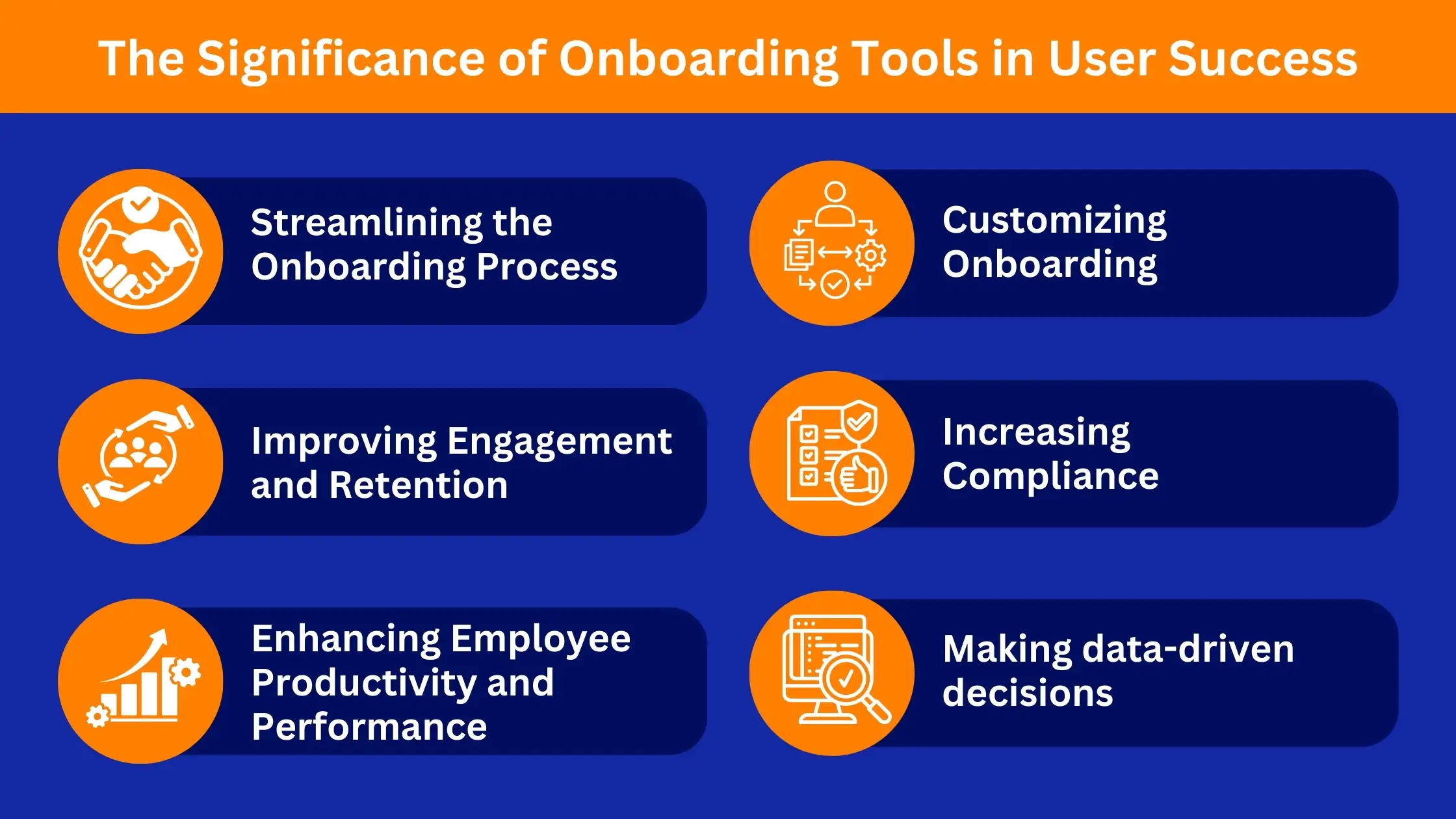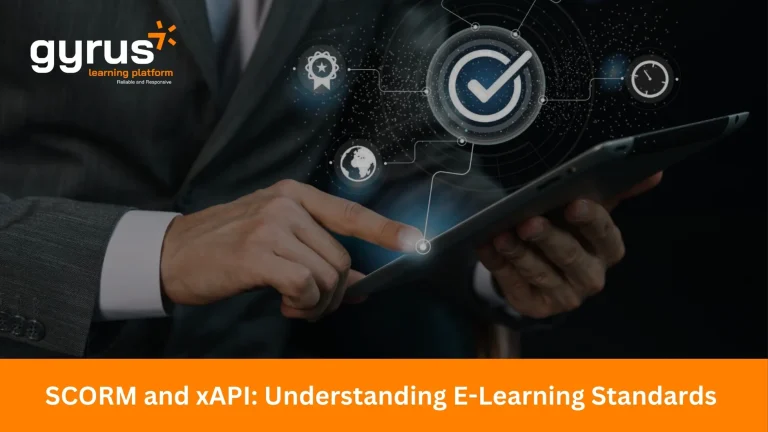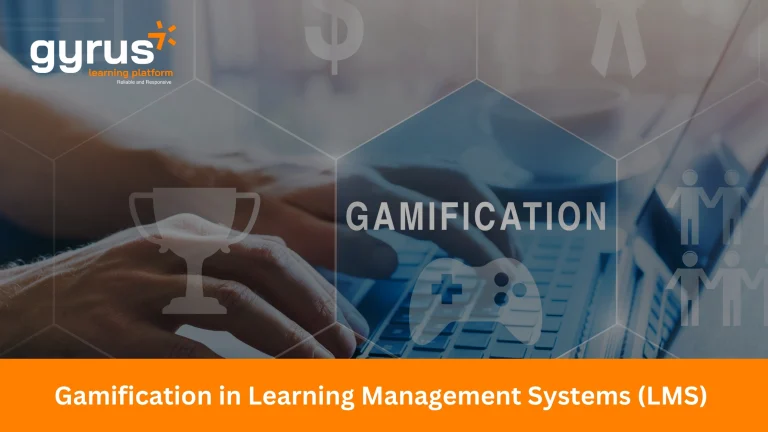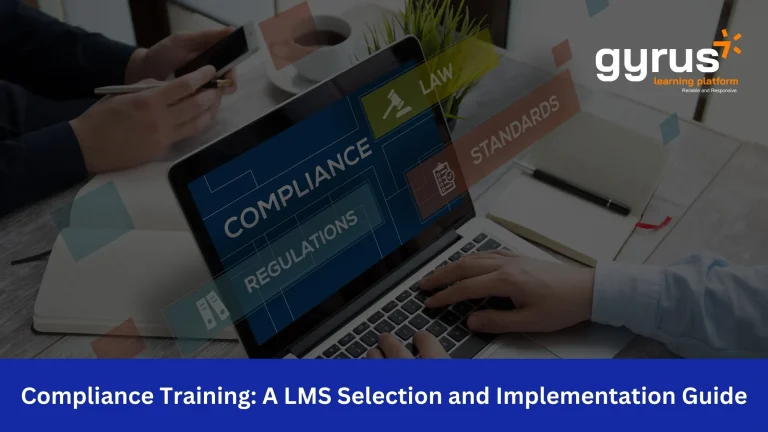Employee onboarding is a process of welcoming new employees into the organization. This includes introducing employees to the organization’s culture, mission, vision, and hierarchical structure.
A well-structured onboarding process can help organizations reduce employee churn, enable employees to adapt quickly to the new culture, enhance employee engagement, and increase overall employee satisfaction.
To ensure a smooth new employee orientation, organizations must consider using employee onboarding tools. An employee onboarding tool is software that helps organizations automate paperwork, create interactive learning experiences, and track the onboarding progress of new employees to ensure successful onboarding.
Let’s understand more about the onboarding process and the role of the Learning Management System (LMS).
Understanding Employee Onboarding Tools
Let’s understand the role of onboarding software in integrating new employees into the organization.
Definition and Types
Employee onboarding tools are software that helps organizations streamline the onboarding process and provide a memorable experience to employees. Depending on their purpose, organizations can use various types of onboarding software.
For example, they can use comprehensive end-to-end onboarding software to manage the entire onboarding process, from managing documentation to delivering training and reporting the impact.
Other employee training tools include:
- Document management tools for managing administrative tasks.
- Training and development platforms to manage and deliver the training content.
- Feedback tools to gather valuable insights from employees, identify trends, and identify improvement areas.
Significance of Onboarding Tools

- Streamlining the onboarding process
Onboarding tools can assist the HR team in collecting, verifying, and storing employee information in a centralized location. Everything is automated, so HR teams don’t have to spend time on documentation or manual work. They can easily access employees’ information and spend more time guiding them through onboarding. The streamlined process reduces HR’s administrative burden and improves onboarding efficiency. It is beneficial when onboarding multiple employees simultaneously.
- Improving engagement and retention
A positive onboarding process increases employee engagement and retention. Onboarding tools can help organizations create a well-designed and structured onboarding workflow that streamlines the process and makes it memorable for employees.
- Enhancing employee productivity and performance
Onboarding tools ensure that new employees know their responsibilities and role in achieving the organization’s goals early in the process. This helps the employees adjust to the new role faster, leading to an overall boost in productivity and performance.
- Customizing onboarding
Most onboarding tools allow organizations to customize the training and onboarding processes based on employees’ learning styles, skills, and roles. This helps employees retain knowledge and leads to performance improvement.
- Increasing compliance
A typical onboarding process involves multiple steps. Missing a single step could lead to compliance issues in the future. Onboarding tools automate the entire process. This helps organizations ensure all the steps are completed on time, enabling the HR teams to maintain compliance.
- Making data-driven decisions
Most onboarding tools have in-built analytics and reporting features that monitor the onboarding process’s effectiveness and employees’ progress and identify potential bottlenecks impacting onboarding. Organizations can use these insights to make data-driven decisions and improve the process.
GyrusAim LMS: A Comprehensive Solution
An LMS is crucial for organizations to automate onboarding and training experiences. Let’s look at how GyrusAim LMS can deliver this experience.
Introduction to GyrusAim LMS
GyrusAim LMS is a cutting-edge tool that provides all the LMS benefits, such as streamlining and enhancing onboarding and training processes. Its customizable features check all the learning management system features necessary in an LMS. It helps personalize learning experiences, improve employee engagement, and increase productivity.
How GyrusAim Enhances Onboarding
Here are a few features that can help organizations improve onboarding.
- Customizable onboarding modules
Organizations can tailor the training modules to accelerate learning based on every employee’s role, experience, and skill level. This will help organizations improve the relevance of the course content and increase engagement. A tailored approach can also help accelerate the onboarding process, enabling new employees to join the workforce quickly.
- Tracking and reporting capabilities
GyrusAim LMS provides in-depth reporting and analytics that allow organizations to measure the effectiveness of their onboarding programs and track employee engagement. These insights can be used to make data-driven improvements to the onboarding process.
- Integration with HR systems for seamless onboarding
GyrusAim LMS can easily integrate with the organization’s existing HR tools. This makes data exchange and communication between the systems seamless and aids the HR team in making data-driven decisions to improve onboarding.
- Customizable interface
GyrusAim LMS allows organizations to customize the interface to reflect their branding. It also supports over 15+ languages, which makes it easy for employees to learn in their preferred language and get onboarded quickly.
- Interactive onboarding with gamification
At a time when most employees work remotely, an immersive and interactive interface can reduce alienation and keep them engaged during onboarding. Gamification is one of the most effective ways to enhance interactivity and engagement. With GyrusAim LMS, organizations can incorporate game elements like points, badges, and leaderboards to drive engagement.
Best Practices for Onboarding with LMS
While onboarding tools make it easy for organizations to integrate new employees into the workforce, that alone wouldn’t suffice. Organizations must design an effective program and work continuously towards improving it.
Here’s how they can do it.
Designing Effective Onboarding Programs
- Tailoring onboarding content to company culture
Start aligning the onboarding program design with the organization’s unique values, mission, and culture by tailoring the onboarding content and resources. This will help new employees understand the organization’s culture, job roles, and expectations and adapt quickly.
- Utilizing multimedia elements for engagement
Include multimedia in onboarding. This could include videos, images, infographics, and animation. The objective is to make the learning process more engaging and help employees learn more effectively.
- Incorporating interactive modules in the LMS
Include gamification and interactive onboarding modules to make the onboarding process more interactive and less passive. Options like simulations and virtual reality (VR) are also effective, as they allow new employees to implement their knowledge in a safe environment before using it in real-world situations.
- Personalizing the learning paths
No two employees are the same, even if they have the same skillset or experience. Hence, organizations must not follow a cookie-cutter approach to onboarding. They must personalize the learning paths by tailoring the onboarding resources and journey based on employees’ roles, interests, and skills. Organizations can also use LMS to allow employees to set their own learning pace and receive one-on-one feedback from managers and mentors.
- Supplementing with mentorship and buddy programs
Tools alone are not sufficient to help employees complete onboarding. They need guidance and support to adjust to the new environment. That’s where mentorship helps. Mentors and buddies are those who are already in the organization. They are experienced enough to guide and clarify new employees’ doubts and help them adapt to the evolving environment.
- Implementing in phases
Consider rolling out the onboarding content in phases to avoid overwhelming new employees. This will help them effectively fit into their new roles.
Measuring and Improving Onboarding Success
Continuous improvement in onboarding helps organizations build a successful program. To make these improvements, organizations must measure the program’s effectiveness using specific onboarding success metrics, identify improvement areas, and make data-driven improvements. There are many ways to measure and improve onboarding; let’s look at some common ones.
- Utilizing analytics and reporting features in LMS
Define the metrics and use LMS analytics to track them. These metrics could include completion rates, time spent on each module, and learner engagement. The data generated by LMS can provide organizations with valuable insights into how well their program performs and where it needs improvement.
- Gathering feedback for continuous improvement
Organizations can collect feedback from new employees through surveys, feedback forms, and interviews or casual conversations. This will help them identify the potential bottlenecks and make a continuous improvement in onboarding.
- Case studies or success stories
Organizations can document and share case studies and success stories of other employees who completed the program to demonstrate its importance. This could inspire new employees to complete the program and boost completion rates.
- Monitoring employee retention rate
Employee retention rate can be a good indicator of the onboarding program’s success. If the employee leaves the organization shortly after onboarding, it means that the program did not meet their expectations. Analyze the retention rate regularly to identify patterns and make necessary changes to reduce employee churn.
- Tracking time to productivity
Time-to-productivity indicates how long it would take for an employee to become productive in their roles. For example, organizations can measure the time to complete the onboarding and start working or the time to achieve milestones and performance goals. This will help organizations identify issues that delay the onboarding completion time and take steps to solve them.
- Performance evaluation
Conduct regular performance evaluations of new employees to ensure knowledge retention and measure the effectiveness of the onboarding program. Organizations can assess employees through tests post-onboarding or compare their performance with established benchmarks or with other peers. This will help organizations make continuous improvements in onboarding and better prepare employees for new tasks and challenges.
Future Trends in Employee Onboarding Tools
As organizations evolve, so should their onboarding process. They must leverage innovative technologies to create a more engaging and memorable experience for employees.
- Introduction to emerging technologies in onboarding
The future of onboarding is shaped by emerging technologies, such as:
- Predictive analytics to analyze onboarding and employee data, predict new employees’ needs, and proactively address challenges.
- Artificial Intelligence (AI) and automation to automate tasks.
- Augmented Reality (AR) and Virtual Reality (VR) to create immersive experiences for employees and train them in a simulated environment.
- The role of AI and automation in the future of onboarding.
Here are a few ways organizations can use automation and AI in onboarding.
- AI can automate paper by generating and managing documents digitally. This helps organizations save time and reduce errors.
- AI-powered chatbots can provide real-time responses to new employees’ queries and provide them with all the information required to get started in a new organization. Personalized and timely responses from AI chatbots can alleviate employees’ stress and anxiety and help them adapt quickly to a new environment.
- AI can analyze employees’ progress and empower the HR teams with insights to tailor the onboarding process based on employees’ roles, skills, and preferences.
Conclusion
The popular adage – the first impression is the last impression can be applied to onboarding processes. A positive onboarding experience will have a lasting impression on employees and influence their engagement within the organization.
To facilitate smooth onboarding, organizations must choose the right onboarding tool. They must be prepared to increase their onboarding tool investment to improve the onboarding process.
There are plenty of onboarding tools available. GyrusAim LMS is one of the leading tools available.
GyrusAim LMS is a comprehensive solution offering features like personalized learning paths, advanced analytics, and gamification that address the modern organization’s onboarding challenges. It helps create a positive first impression on new employees.
In addition to using onboarding tools like GyrusAim LMS, organizations must design effective onboarding programs and measure their effectiveness to improve the process continuously.
Book a free LMS demo to witness how GyrusAim LMS can help onboard new employees.









